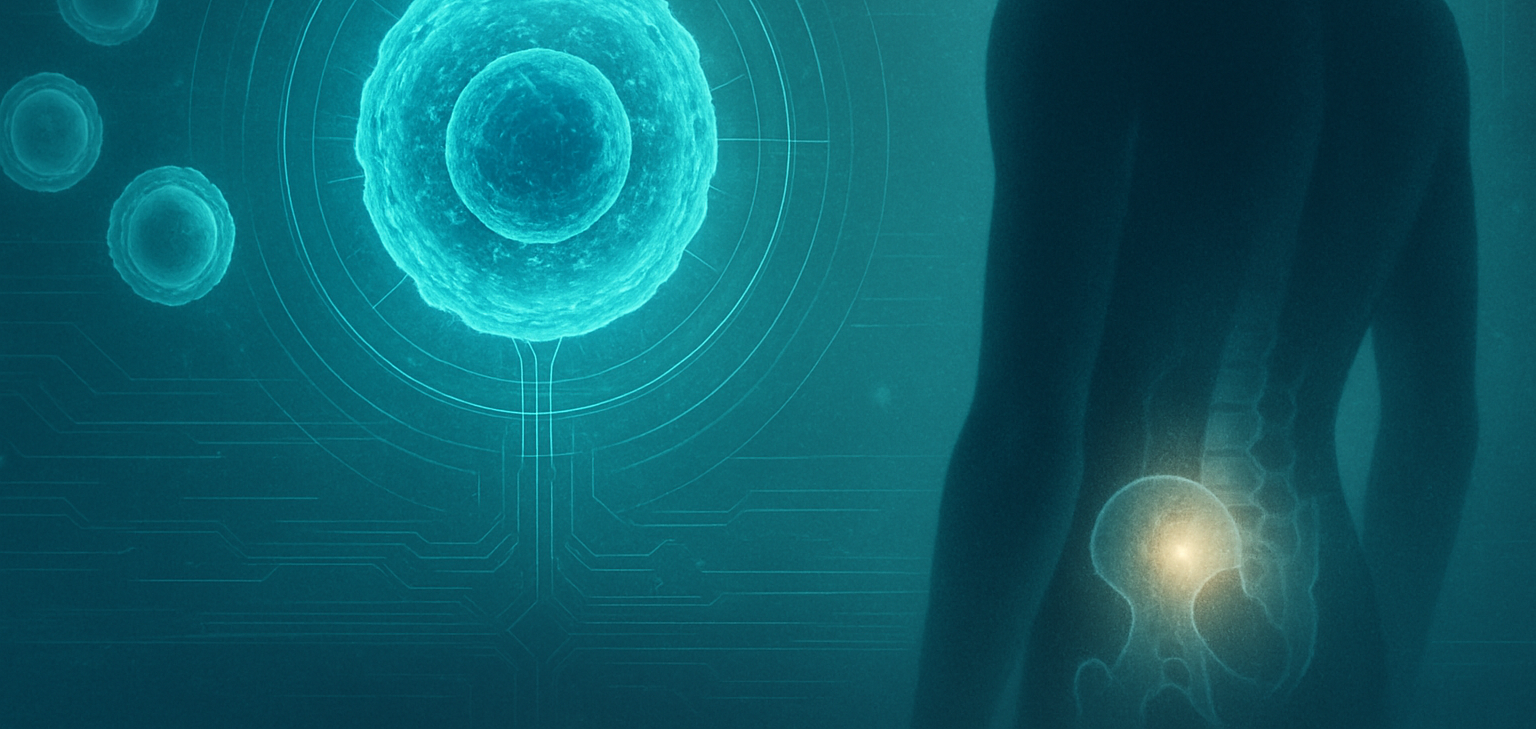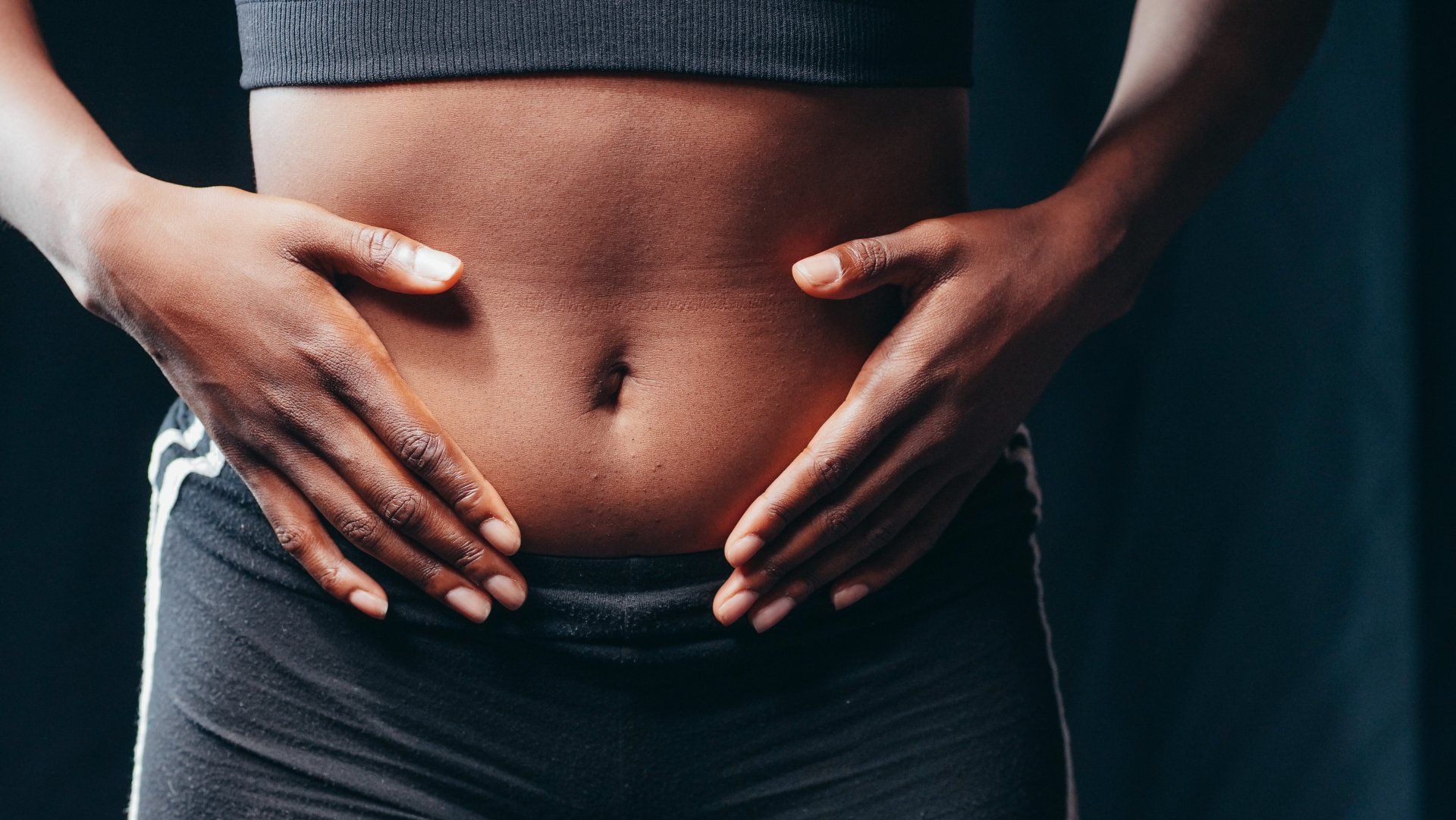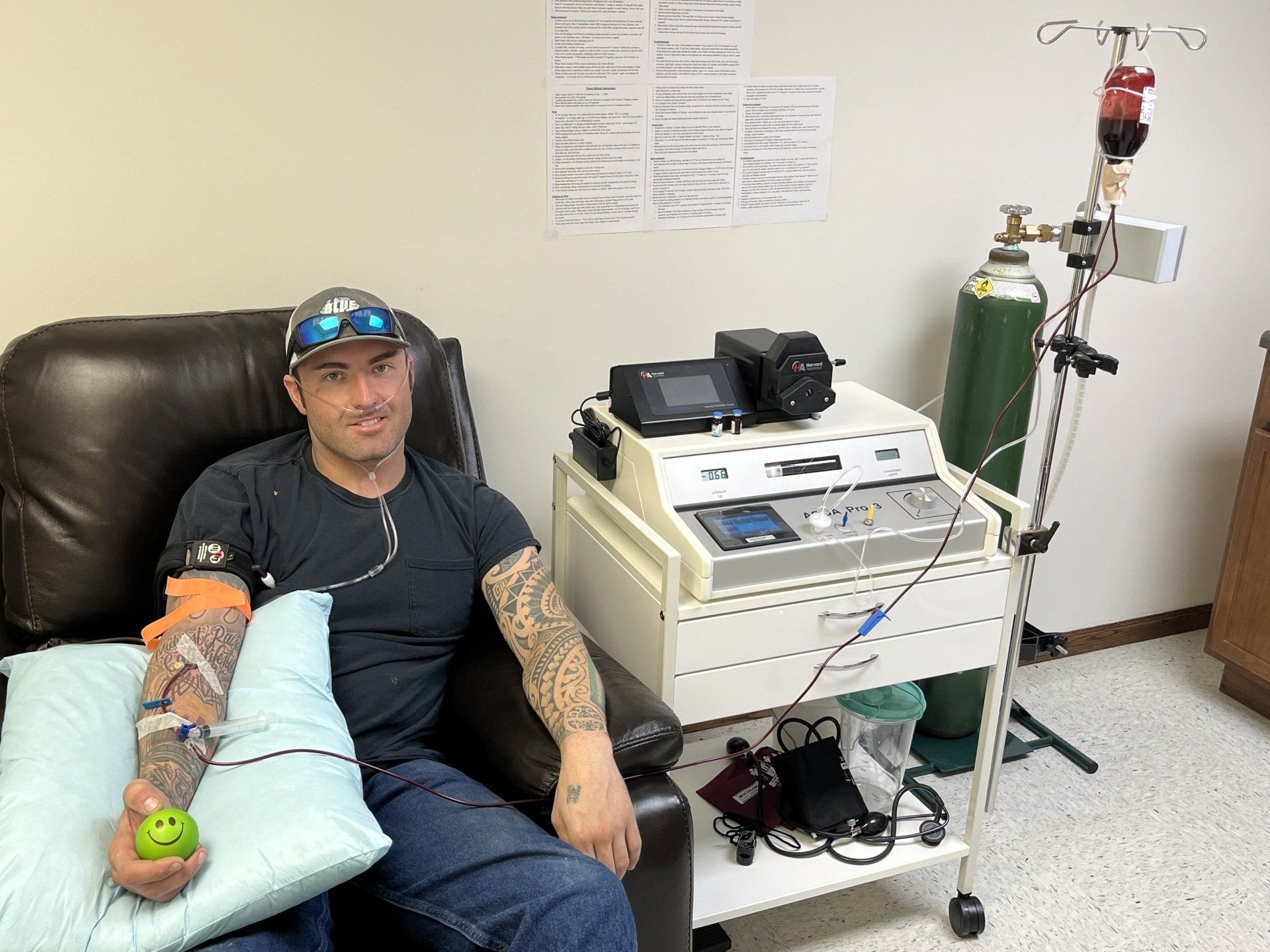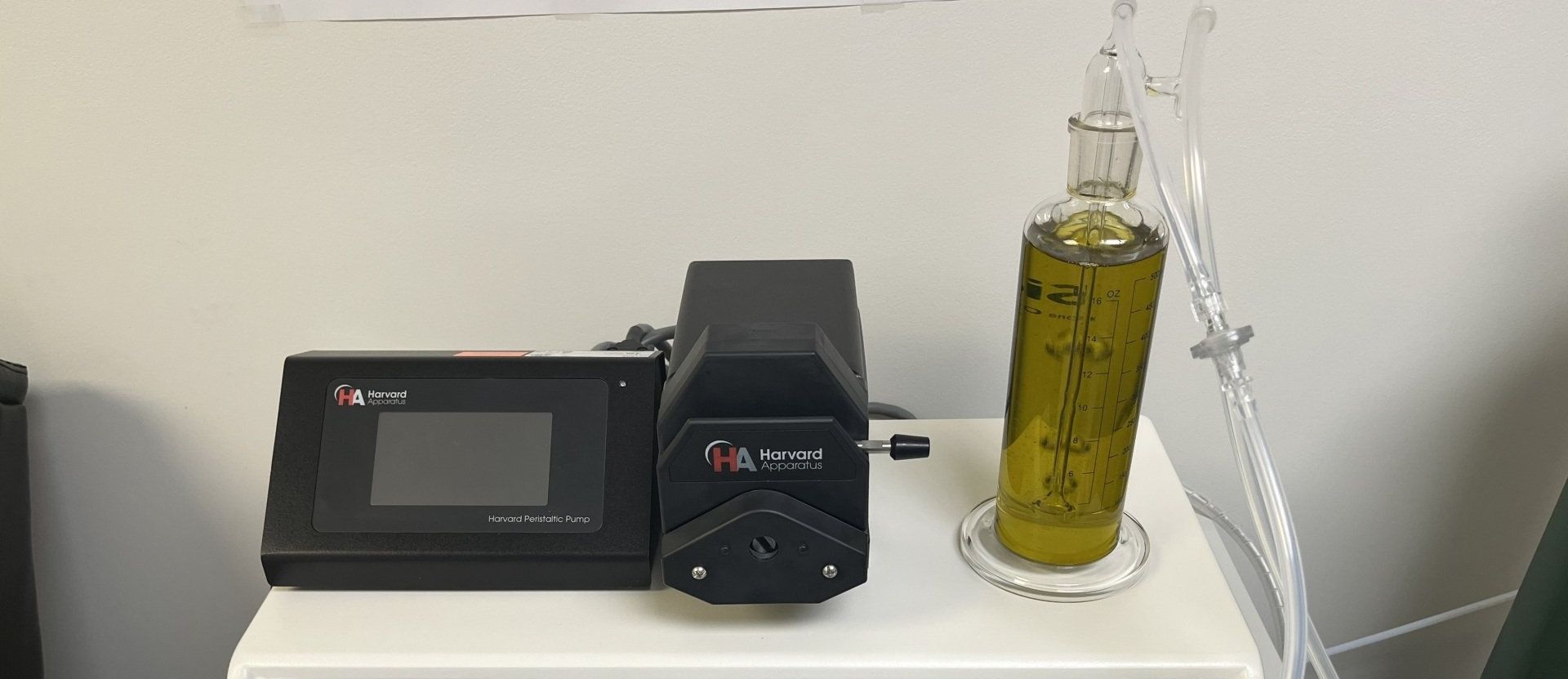Health Educational Blog
PRP vs Stem Cell Cost: What You Need to Know When you're living with joint pain, finding the right treatment matters. Many people today are looking for natural solutions instead of surgery. Two of the most powerful options are Platelet-Rich Plasma (PRP) therapy and Stem Cell therapy. But what do they cost? And which one is right for you? Understanding the Basics What is PRP Therapy? PRP therapy uses your own blood to speed up healing. We concentrate the platelets, rich in growth factors, and inject them into injured areas. PRP can help with arthritis, tendon injuries, ligament pain, and more. What is Stem Cell Therapy? Stem Cell therapy uses regenerative cells to rebuild damaged tissues. These cells can become bone, cartilage, or muscle. This makes stem cells a powerful choice for deeper joint repair, especially in hips and knees. The Real Cost of PRP and Stem Cell Therapy How Much Does PRP Cost? At One Natural Health in Lincoln, Nebraska, PRP injections typically cost between $500 to $1,500 per treatment whether its normal PRP or A2M PRP, or one joint or many joints. Some patients need a series of treatments to get the best results. How Much Does Stem Cell Therapy Cost? Stem Cell therapy usually costs more because the process is more complex. You can expect pricing between $3,500 to $7,500 per treatment depending on the area treated and the source of stem cells. Why People Choose PRP or Stem Cells Many people face a tough reality: ongoing joint pain, swelling, stiffness, and limited movement. Surgery is often recommended — but it's expensive, risky, and comes with long recovery times. PRP and Stem Cell therapies offer a different path. These treatments work with your body to repair damage naturally. You avoid surgery, downtime, and can often get back to living fully again. Which Treatment is Right for You? Choose PRP If: You have mild to moderate arthritis. You have tendon, ligament, or soft tissue injuries. You want a lower-cost, natural healing option. Choose Stem Cells If: You have severe arthritis, especially in hips or knees. You need deeper tissue regeneration. You are looking for a stronger long-term solution. At One Natural Health, Daniel Meinke FNP can guide you through the best choice based on your condition and goals. Frequently Asked Questions Is PRP or Stem Cell therapy covered by insurance? Most insurance plans do not cover PRP or Stem Cell treatments yet. However, we offer flexible payment options at One Natural Health to make regenerative medicine affordable. How many treatments will I need? Some patients feel improvement after just one treatment. Others may need two to three sessions, depending on the severity of the injury or arthritis. PRP and Stem Cell Therapy is combine with Hyperbaric Oxygen Therapy to boost healing and results. Is there downtime after PRP or Stem Cell therapy? Minimal. Most people return to normal activities within 24 to 48 hours. Some may experience mild soreness, which fades quickly. How soon will I feel results? Healing is gradual. Most people notice significant improvement in pain and mobility within 4 to 12 weeks after treatment. Take the Next Step Toward Healing If you are struggling with joint pain, don't wait. Discover how PRP or Stem Cell therapy can help you heal naturally, without surgery or long recovery times. Contact One Natural Health in Lincoln today to schedule your consultation with Daniel Meinke FNP. Start your journey back to a stronger, pain-free life!

Stem cell therapy for hips is opening a transformative new path in joint health, particularly for those seeking natural, non-surgical solutions. At One Natural Health in Lincoln, Nebraska, patients are discovering a revitalizing alternative to surgery — one that fosters healing, minimizes downtime, and preserves active lifestyles. A natural, non-surgical option for hip pain Supports the body's intrinsic healing processes A potential alternative to hip replacement surgery May enhance mobility and alleviate chronic pain Active individuals, athletes, and seniors alike are embracing this regenerative approach. By tapping into the body’s own repair mechanisms, stem cell therapy offers new possibilities for restoring hip function and finding lasting relief from conditions like arthritis — without major surgical intervention. Understanding Stem Cell Therapy for Hips Stem cell therapy represents a leading-edge treatment that awakens the body’s own regenerative power. Let’s explore how this innovative therapy works — and the conditions it can address. How Stem Cells Function Stem cells are nature’s master repair system — capable of transforming into various types of cells to rejuvenate damaged tissues. Their key actions include: Regenerative Potential : Stem cells can differentiate into cartilage, bone, or soft tissue cells, making them uniquely suited for repairing injured joints. Cartilage Restoration : When cartilage—the crucial cushion between bones—wears down, pain follows. Stem cells can help regenerate this cartilage, supporting smoother, pain-free movement. Inflammation Modulation : Chronic inflammation often underlies joint degeneration. Stem cells have the capacity to downregulate inflammation, easing swelling and discomfort. Tissue Rebuilding : Stimulating new tissue growth, stem cells gradually restore structures that have been eroded by time, wear, or injury. Enhanced Blood Flow : By promoting improved vascularization, stem cells help deliver essential nutrients and oxygen, accelerating recovery. Conditions Stem Cell Therapy Can Help Stem cell treatment is not a one-size-fits-all solution. It is tailored to address specific hip conditions with precision: Hip Arthritis : As cartilage deteriorates, hip arthritis sets in. Stem cell therapy aims to rebuild cartilage and improve joint function, often delaying or preventing surgical intervention. Avascular Necrosis : When blood supply to bone tissue is compromised, bone death can occur. Stem cells assist in restoring circulation and bone vitality, potentially avoiding hip replacement. Bursitis : Inflammation of the hip's cushioning sacs (bursae) can cause sharp pain. Stem cell therapy helps soothe inflammation and promote healing at the source. Stem cell therapy is emerging as a beacon of hope — restoring comfort, mobility, and optimism to those facing degenerative hip conditions. The Upside of Stem Cell Treatment for Hips This therapy is not just about managing pain — it’s about true biological restoration and reclaiming quality of life. Success Stories and Outcomes Pain Reduction and Functional Gains : Many patients experience substantial relief within a few months. As regenerative processes unfold, mobility increases and daily activities become easier. Non-Surgical Approach : For those wanting to avoid the risks and recovery times of surgery, stem cell therapy offers a minimally invasive solution — often allowing patients to return home the same day. Delaying or Preventing Hip Replacement : By regenerating cartilage and enhancing joint integrity, stem cell treatment can significantly postpone, or even eliminate, the need for total hip replacement — especially valuable for younger and active patients. Tailored Care : Every hip is unique. Stem cell therapy is personalized based on each patient’s anatomy and condition, leading to greater treatment precision and effectiveness. Reduced Risk of Bone Collapse : In cases like avascular necrosis, stem cells help reestablish healthy bone tissue and blood supply, reducing the chance of joint collapse. Ultimately, stem cell therapy offers a future where hip pain does not define daily life — a future where natural healing empowers long-term movement and vitality. What to Expect: The Procedure Embarking on stem cell therapy may feel unfamiliar, but the process is designed to be straightforward and patient-centered. Step 1: Bone Marrow Harvesting The journey begins with harvesting your own stem cells , usually from the pelvic bone. Under local anesthesia, a highly trained provider such as Daniel Meinke, FNP collects a small sample of bone marrow using a fine needle. The procedure is quick, typically low in discomfort, and performed on an outpatient basis. Step 2: Stem Cell Processing and Injection After collection, your stem cells are purified and concentrated using advanced technology. Using 3D imaging guidance, Daniel Meinke, FNP precisely injects the stem cells into the damaged areas of your hip — maximizing accuracy and effectiveness. This meticulous targeting ensures the regenerative cells are delivered exactly where they are needed most. Step 3: Recovery and Regeneration Following the procedure, most patients return home the same day. First 24 Hours : Rest and minimal activity are recommended. 2 Weeks : Avoid heavy load-bearing activities. 3–4 Weeks : Light cardio and walking are typically reintroduced, always under provider guidance. The regenerative process continues over weeks and months, offering lasting improvements in joint health, pain levels, and mobility — a natural restoration rather than a mechanical replacement. Frequently Asked Questions about Stem Cell Therapy for Hips Does stem cell therapy work for hips? Yes. Clinical experiences and patient outcomes show that stem cell therapy can significantly improve hip joint function and reduce chronic pain. Many patients regain mobility they once thought lost — without undergoing joint replacement surgery. How much does stem cell therapy for hips cost? Costs vary depending on treatment specifics, but generally range between $3,000 to $7,000 per procedure. During your consultation at One Natural Health in Lincoln, Nebraska, you’ll receive a personalized plan and transparent pricing to fit your needs. Is stem cell therapy covered by insurance? Currently, most insurance carriers classify stem cell treatments as investigational, and thus do not cover them. However, financing options and payment plans are often available, making regenerative care accessible for those seeking a natural path to healing. What are alternatives to Stem Cell Therapy? A2M PRP Alpha 2 Macroglobulin is the latest innovation in PRP Therapy, getting closer to rivaling Stem Cell Therapy, A2M is precisely used for athletes and advanced arthritis. In Summary: Stem cell therapy for hips represents a remarkable leap forward — a science-driven, minimally invasive option to reduce pain, improve mobility, and restore the body's natural resilience. At One Natural Health in Lincoln, Nebraska, Daniel Meinke, FNP and his team are helping patients rediscover life without limits, one step at a time.

Top 10 reasons your Body may feel Weak and Heavy,, And What to Do About It! 1. Sleep Deprivation Based on the American Academy of Sleep Medicine: Healthy adults need 7 to 9 hours of rest each night. Most Americans get 7 or less hours of sleep, increasing the risk of developing chronic disease. TIP: If you get less than seven hours per night of sleep and your fatigued, try optimizing your sleep: go to bed earlier, avoid screens 1 to 2 hours before bed, and have a cool and dark bedroom without electronics/phones. To invest in your sleep environment for the rest of your life, we recommend and use ourselves and for our children the magnetico sleep pad system, which detoxifies the body of heavy metals while immersing you in a protective magnetic field just like the Earth's field. Use Coupon Code HEALTH15 for 15% off your Magnetico System. 2. Lack of Exercise Activity is vital to maintaining your energy levels. Exercising helps you produce mitochondria, little engines in the cells of your body that convert oxygen and food into energy. The more mitochondria your body has the more energetic you are. Tip: To increase opportunities for exercise it helps to increase sleep quality at night which increases your energy capacity for workouts (See #1 above). 3. Dehydration Weakness and fatigue are both common signs from dehydration. Researchers show that this is caused by a decrease in the blood volume of your body when you're dehydrated. If you're not getting enough blood flow, your blood pressure may fall, which makes it difficult for oxygen and nutrients to get to body parts. Tip : About 20% of our water comes from food , the remainder you can drink. Alcohol and coffee dehydrate the body and strip us of minerals, so limit these choices and try adding electrolytes or sea salt to a glass of water in the morning instead. 4. Poor Diet The energy level of our bodies is linked to the foods we eat. Daily consumption of processed and sugary foods will cause us to feel exhausted/bloated, or give us that "heavy feeling in my stomach". Instead, you can opt to have sugary and processed foods as a treat a few times a week, or after your workout when your body is primed for glucose intake. As we know having fruits and vegetables, lean proteins, and whole food fats are great for us. 5. Stress Stress in the workplace is on the rise according to a new study from the American Psychological Association. The stress of money and relationships, work, and many other issues in life can drain your energy levels and cause your body to feel heavy, tired, and sad. There are many ways to deal with stress. We recommend venting your emotions,, such as punching a pillow, meditation/deep breathing, exercise, sunlight/time in the trees, and empowering yourself to believe some of your life stressors will make you stronger in the end. 6. Anemia Anemia is a condition when your body fails to produce enough red blood cells to carry oxygen from the lungs to the body's tissues. Insufficient oxygen to organs and tissues causes your body to feel fatigued and heavy, leads to migraines, menstrual issues, dizziness, nausea, and heart palpitations or atrial fibrillation (A-Fib). Anemia typically occurs due to an iron dysregulation, which can be affected by low copper levels. Illnesses and various deficiencies can also trigger anemias. In addition to mineral and B vitamin anemias, oxygen and ozone therapy increase oxygen utilization while you work to find the cause of your anemia. 7. Insulin Resistance Insulin is a hormone that your body uses to turn sugar as glucose into energy. It assists your cells to take glucose from the blood or keep it in storage for use later. If cells become insulin resistant, glucose can't enter cells and transform into energy. This lack of energy can cause you to feel tired as well as heavy and weak. Tip: To help increase insulin sensitivity, you can exercise, increase sleep quality, and supplement with Berberine, Apple Cider Vinegar, and Inositol. 8. Depression and Anxiety Feelings of weakness, fatigue and weight loss often come with anxiety and depression. When depressed or anxious we feel weighted down and heavy because neurotransmitters that regulate energy levels (like dopamine and serotonin) aren't functioning properly. The heaviness and fatigue can occur from anxiety-related stress. Life stressors/anxiety release hormones to fight or flight hormones, and following that it is when you "crash" as the hormones levels drop quickly. The more times this happen the quicker it leads to adrenal fatigue, high cortisol, and weight gain. Proper dopamine highs include comedy movies, sex, cold showers/cold plunges, and exercising. Serotonin levels increase with St John's Wort and Methylene Blue also. 9. Food Intolerances Feelings of heaviness occur most often after meals, where a healthy meal energizes us and suboptimal meals make us tired, sluggish, and searching for caffeine. Developed food intolerance are rampant, 1 in 10 adults and 1 in 13 kids have food intolerances which cause fatigue and discomfort after eating. Food intolerances cause irritation in the digestive tract, which leads to bloating, acid reflux, and the feelings of heaviness. Trialing an elimination diet can help us find current food irritants, reducing the gas, bloating, and stomach discomfort. After healing the root cause, most people will later tolerate many of the foods that may currently make them feel heavy and tired at present. 10. Hypothyroidism Thyroid hormones regulates the body's processes of metabolism and digestion, as well as heart rate. Hypothyroidism is an under active thyroid, where the thyroid can't produce enough hormones, often due to nutritional and mineral deficiencies. Without thyroid hormones, system functions slow down. The digestive system can't process energy and nutrients making the body can feel heavy or weak. If you think you have hypothyroid start with massaging the thyroid from top to bottom a few times a day, while also supplementing with topical 2% Lugol's iodine and selenium in pill form or raw brazil nuts. Conclusion Whatever you do, empower yourself and celebrate all your daily victories. We are all a work in progress, but if you can't find the reason your body is feeling heavy and weak, we are here to help. Daniel Meinke, Family Nurse Practitioner at One Natural Health in Lincoln is a regenerative medicine provider who improves peoples health by providing individua lize d functional medicine. We jump start the mitochondria of the cells to make you energy with IV Ozone , Methylene Blue , UVBI , PRP for joints and arthritis , and more. When you question Why my body feels heavy? Come to this list and explore what you can do to improve your feelings.

Hyperbaric Oxygen Therapy (HBOT) at One Natural Health in Lincoln NE is a safe and effective therapy that can provide relief for a variety of conditions, including:
Chronic Wounds: Accelerate wound healing and prevent infections.
Brain Injuries: Improve cognitive function, memory, and concentration.
Sports Injuries: Reduce inflammation and promote tissue repair.
Chronic Fatigue Syndrome: Increase energy levels and reduce symptoms.
Fibromyalgia: Alleviate pain and improve quality of life.
Multiple Sclerosis: Improve neurological function and mobility.
Decompression Sickness: Treat diving-related injuries.

Knee Gel Injections: Are They Worth It? Knee pain can be a real drag, especially if it's affecting your daily activities. You might have heard about knee gel injections as a possible solution. But are they really worth it? Let's find out! What Are Knee Gel Injections? Knee gel injections, also known as hyaluronic acid injections, are a type of treatment for knee osteoarthritis. Osteoarthritis is a condition where the cartilage in your knee joint wears down. Hyaluronic acid is a naturally occurring substance found in the fluid that lubricates your joints. Knee gel injections can help reduce knee pain and improve joint function. They can help you move around more easily and do the things you love. How Do Knee Gel Injections Work? Hyaluronic acid injections work by replenishing the natural fluid in your knee joint. This can help reduce friction and inflammation, which can lead to less pain and swelling. The injections are given by a healthcare provider. They are typically given as a series of injections over several weeks, 2 to 3 series are often needed for knee gel only injections. Are Knee Gel Injections Effective? Many studies have shown that knee gel injections can be effective in reducing knee pain and improving joint function. However, the results may vary from person to person. Some people may experience significant relief from knee pain after receiving knee gel injections. Others may experience temporary or no relief. Alternative to Knee Gel that are proven to rebuild cartilage in many patients include PRP ( Platelet-Rich Plasma ) Injections, Stem Cell Therapy, Ozone Therapy , and Dextrose (known as Prolotherapy). Many of these other Regenerative injections are done at One Natural Health in Lincoln Nebraska. Are Knee Gel Injections Safe? Knee gel injections are generally considered to be safe. However, like any medical procedure, there are potential risks. The most common side effects of knee gel injections are mild pain, swelling or redness at the injection site which can indicate a rare infection. Are Knee Gel Injections Right for You? If you're considering knee gel injections, it's important to talk to your doctor. They can help you determine if this treatment is right for you. Your doctor will likely consider your medical history, symptoms, and overall health. Other non procedure options to knee gel injections include physical therapy and medications. How Much Do Knee Gel Injections Cost? The cost of knee gel injections varies, as insurance companies are less often covering the treatment series, making alternative such as PRP injections, Ozone Therapy, Stem Cell Therapy, and Dextrose Prolotherapy better options. Conclusion Knee gel injections can be a helpful treatment for knee osteoarthritis. However, it's important to weigh the potential benefits and risks before making a decision. Talk to your doctor to see if knee gel injections are right for you.









